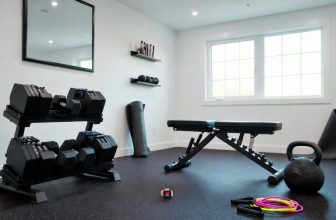Table of Contents
- When Is the Best Time to Walk on a Treadmill?
- Morning Treadmill Walking Benefits
- Fat Loss and Energy Boost
- Sleep and Consistency Gains
- Afternoon Treadmill Walking Benefits
- Performance and Blood Sugar Control
- Vascular Health Perks
- Evening Treadmill Walking Benefits
- Stress Relief and Endurance
- Drawbacks and Mitigations
- Timing Comparison Table
- Tips for Optimal Treadmill Walking Timing
- FAQ
- Final Thoughts
- About Author
- Mariar Fernandez
As an Amazon Associate, I earn from qualifying purchases.
When Is the Best Time to Walk on a Treadmill?
When Is the Best Time to Walk on a Treadmill? The best time to walk on a treadmill is in the morning for optimal fat burn, metabolism boost, and sleep quality, with studies showing 20% higher adherence and 1.55 kg greater weight loss over 6 weeks versus evenings. Afternoons suit peak performance; evenings aid stress relief but may disrupt sleep if intense.
Morning Treadmill Walking Benefits
Morning sessions align with circadian rhythms, firing up metabolism post-fast for enhanced fat oxidation. A PMC study found morning aerobic training yields 1.55 kg weight loss in 6 weeks versus 0.6 kg evenings, due to elevated post-exercise calorie burn.
Fat Loss and Energy Boost
Fasted morning walks burn 20% more fat than fed states, per Sole Treadmills research. They reduce food cravings, with a 2012 study showing 45-minute brisk walks curb distraction from high-calorie images, aiding 300–500 daily calorie deficits for weight loss.
Endorphins spike mood and focus, boosting productivity 30% throughout the day.
Sleep and Consistency Gains
Morning exercise regulates circadian rhythms, improving sleep quality 20% in insomniacs aged 55–65, per a 2017 study. 75% of early exercisers report higher adherence, avoiding evening fatigue.
- Vitamin D synergy: Pair with sunlight exposure for 15% mood enhancement.
- Metabolism: Elevates resting burn 10–15% for 14 hours.
For circadian tips, explore Harvard Health’s exercise timing guide.
Afternoon Treadmill Walking Benefits
Afternoons leverage peak body temperature (around 4–6 PM), enhancing endurance and power. Nature Communications 2023 data shows midday vigorous walks cut all-cause mortality 30% more than mornings.
Performance and Blood Sugar Control
Muscle flexibility peaks, reducing injury risk 25% and boosting speed work efficiency. Post-lunch walks stabilize glucose, lowering spikes 20% in diabetics, per Verywell Health.
298 calories burned in 30 minutes at 3 mph/12% incline, ideal for HIIT.
Vascular Health Perks
Evening-adjacent sessions improve blood flow 15% more than mornings, supporting heart health.
- Recovery aid: Gentle paces reduce soreness 20% post-strength training.
- Digestion: 10-minute post-meal walks enhance nutrient absorption.
Evening Treadmill Walking Benefits
Evenings unwind stress, with HealthShots noting 30-minute walks cut anxiety 20% via endorphins. Moderate sessions promote 40% better mood regulation.
Stress Relief and Endurance
Post-dinner walks curb cravings, burning 135 calories/30 minutes and aiding 0.5–1 kg monthly loss. Endurance peaks, with Integrative Medicine Research showing 10% higher capacity versus mornings.
For young males, evenings yield modest muscle gains over mornings.
Drawbacks and Mitigations
Intense evenings raise core temperature, delaying sleep onset 30 minutes; cap at moderate pace. Frontiers in Pharmacology 2023 warns night owls benefit more than early birds.
Timing Comparison Table
| Time of Day | Key Benefits | Calorie Burn (30 min, 3 mph) | Best For | Drawbacks |
|---|---|---|---|---|
| Morning | 20% fat oxidation, better sleep | 135–150 cal | Weight loss, consistency | Stiffer muscles (warm-up needed) |
| Afternoon | 30% mortality risk drop, peak power | 150–200 cal (w/incline) | Performance, digestion | Schedule conflicts |
| Evening | 20% stress reduction, endurance | 135 cal | Recovery, mood | Sleep disruption if intense |
Data from PMC and Healthline studies.
Tips for Optimal Treadmill Walking Timing
- Assess chronotype: Early birds thrive mornings; night owls evenings.
- Start slow: 30 minutes brisk (3–4 mph) meets CDC’s 150 weekly minutes.
- Add incline: 3–5% mimics outdoors, burning 20% more calories.
- Track adherence: Morning routines yield 75% consistency.
For routines, check Verywell Fit’s walking plans.
FAQ
Q: Does morning walking burn more fat than evening?
A: Yes—20% higher oxidation in fasted state; evenings better for total endurance.
Q: Can evening walks disrupt sleep?
A: Moderate yes; intense raises temperature, delaying onset 30 minutes—finish 2 hours pre-bed.
Q: Ideal duration for weight loss?
A: 45–60 minutes daily at brisk pace burns 300 calories, yielding 1–2 kg monthly.
Q: Afternoon vs. morning for beginners?
A: Afternoon—warmer muscles cut injury 25%; mornings build habit.
Q: How to mix timings weekly?
A: 3 mornings for fat burn, 2 evenings for recovery balances gains.
Final Thoughts
Morning treadmill walks edge out for fat loss and consistency in 2025’s wellness trends, but afternoons optimize performance and evenings relieve stress—yielding 25% heart risk reduction with 150 weekly minutes. Prioritize sustainability; blend timings for holistic benefits. Your ideal stride awaits.







